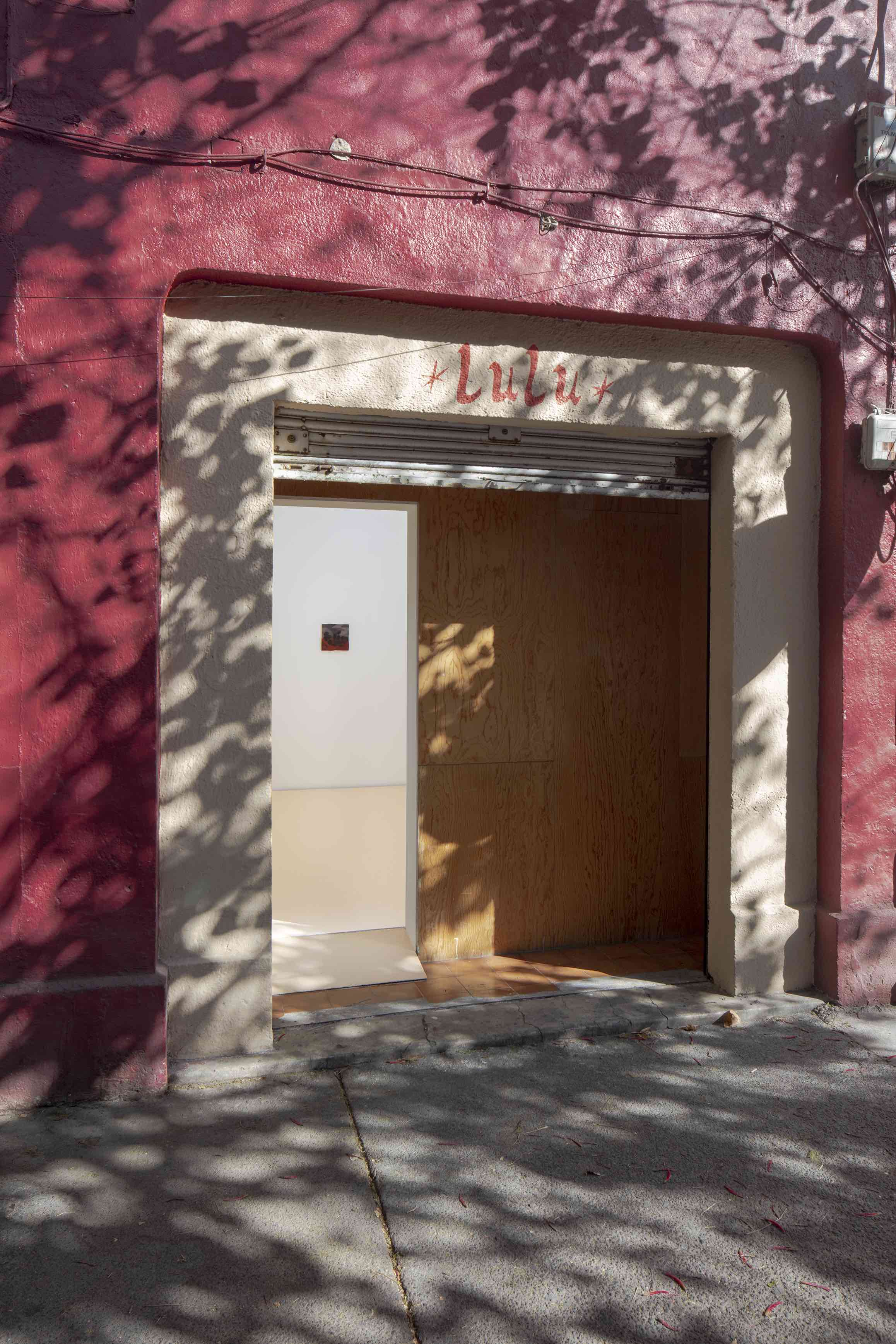
Review
Sweet Holograms: Luz Carabaño’s Exhibition 'sombras' at Lulu
by Mariel Vela
Reading time
4 min
Whenever I try to think about painting I feel a strange incompetence. There arises the suspicion of an unresolved mystery, as well as the obligation to carry out an analysis beyond the pleasure of experience, to contextualize the paintings within a current scene of which I am unaware. The anxieties of the historian are not the same as those of the painter. Before sitting down to pull apart this text, I decided to reread Amy Sillman—a painter who writes—in order to feel encouraged.
I was talking to a famous art historian recently, and I asked him if he knew that different pigments weigh different amounts; and that if a painter were blindfolded and two different tubes of paint were placed in her hands, the painter would know which hand held a tube of cadmium red and which a tube of cobalt violet. The art historian said no, he didn’t know that. This was a shock: it never dawned on me that an art historian might have beheld color, but never held color.*1
Amy Silman

I arrived at Luz Carabaño’s exhibition sombras at Lulu with this quotation as a kind of slogan. “I’m going to hold the colors with my eyes,” I thought. Upon arriving, I saw a painting looming in the background, framed by the gallery entrance. Two cement frames overlapped: first cherry red and then cream, followed by a metal curtain, and further in the background a light wooden surface, and then, finally, the ultra-white flash of the wall. The painting titled bodegón (2022)—minuscule compared to the proportion of all these frames—holds its own in such a way that it seems to have emanated all of this facade in order to crown itself. A sinister little queen. The upper part of the irregular canvas is a spectral violet cleaved by a burnt, ferrous, and very hot red from which blood oranges emerge. In the center are the black figures, like fruits or fourteen pupils of an opaque coal-black.
_-.jpg?alt=media&token=660e7baf-dbc5-4234-9522-b12df3f4644e)
Bruno Enciso, who works at the gallery, led me inside. The raised platform, so characteristic of Lulu, is now painted in a color called Langostino that warms the space. Despite the fact that the tones of Luz Carabaño’s paintings are cold, the shadows that appear in them imply the existence of a sun, or in this case, a sun-bathed floor. “A grayish tone would have created an atmosphere that was too wintery,” Bruno says. The white walls on which they are mounted, all off-center, function as spaces for mobility that contrast with the exquisite tension of their linens. In desplazamiento (2022)*2, the bluish lines encourage us to move left, despite being contained in the irregular edges of the frame, suggesting the same optical phenomenon that erases whatever moves fast enough; a slippage on the greens.
_-.jpg?alt=media&token=0d84e274-f3af-44dd-9d92-be62d2e381ed)
Going back to Amy Sillman, one of my favorite moments of her essay “On Color” is when she talks about the recipes, preparations, and techniques used in order to render certain surface treatments in painting: “Painters constantly discuss these surfaces, touch them, caress them, go over them with special sponges and scrapers, with brushes made of the hair of goat or mink or mongoose, with handles of hardwood or bamboo.”*3. How does our relationship with a color or shape change when its texture is satiny, glossy, lumpy, or dusty? In the gallery text, Carabaño’s paintings are described as almost hologram-like and as seeming to emerge and vanish. The oil paint feels watery and delicately sprayed on the gesso, possibly thinned with turpentine.
_-.jpg?alt=media&token=8b6bec9a-2c5b-4f68-94a1-6b16304cc30e)
“It’s like frosting,” I say to Bruno as I approach the edge of the painting titled cluster (2022). From the side one can see the thickness of the sanded layers on the linen. “The other day someone told me that it reminded them of the glaze on cookies,” he replies. I think of the word “frosting” and how it probably comes from “frost”: a thin layer of ice on a surface. I also think of the word “cluster” and its synonym, “bunch.” A bunch of shadows, blackberries, thistles, African violets, a bunch of sugar that’s been melted and cooled. I then realize that this is the work I like the most because I want to eat it. I hold the sensation and keep it in that cleft between sensory curiosity and intellectual curiosity, for later.
Translated to English by Byron Davies
*1: Amy Sillman, Faux Pas. Selected Writings and Drawings (Paris: After 8 Books, 2022), 51.
*2: See cover picture
*3: Amy Sillman, Faux Pas. Selected Writings and Drawings (Paris: After 8 Books, 2022), 60.
Published on March 16 2023